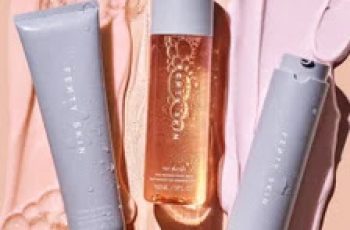Glucosyl Hesperidin and Hesperidin In Skin Care
Glucosyl Hesperidin and Hesperidin are increasingly popular in anti-aging and skin lightening serums and creams. These powerful bioflavonoids offer numerous benefits for the skin. Known for their potent antioxidant and anti-inflammatory properties, they help reduce signs of aging, brighten skin, and improve overall complexion. Hesperidin benefits include enhancing microcirculation, reducing dark circles, and soothing irritated skin, making these ingredients essential for anyone seeking effective skincare solutions.
Polyphenolic compound that can become glucosyl hesperidin
Antioxidant, anti-inflammatory, and dark eye circle benefits
Safe and commonly used in skin care products
Glucosyl Hesperidin and Hesperidin
Glucosyl Hesperidin and Hesperidin are flavonoids known for their strong antioxidant effects, derived from citrus fruits. Flavonoids are a class of polyphenolic compounds that play a vital role in plant defense and human health, particularly in skin protection. These specific flavonoids are predominantly found in the peels and membranes of citrus fruits such as oranges, lemons, and grapefruits. Hesperidin, in particular, is a flavanone glycoside composed of the aglycone hesperetin and the disaccharide rutinose. When glucosylated to form Glucosyl Hesperidin, the compound becomes water-soluble, enhancing its absorption and effectiveness in skincare formulations. Their potent antioxidant properties help neutralize free radicals, protect against oxidative stress, and support overall skin health.
Hesperidin is a bioflavonoid predominantly found in citrus fruits. It has well-documented antioxidant, anti-inflammatory, and vasoprotective properties. Though traditionally studied for its systemic health benefits, this ingredient is increasingly used in skincare products due to its potential skin health benefits.
Glucosyl Hesperidin is a water-soluble derivative of hesperidin, a naturally occurring flavonoid found primarily in citrus fruits such as oranges and lemons. The glucosylation process enhances the solubility and stability of the original compound, making it more effective in cosmetic formulations.
Skin Care Products
What do they do in skin care?
Both forms of hesperidin are used in skincare for their potent antioxidant and anti-inflammatory properties. They help protect the skin from oxidative stress, reduce inflammation, and improve microcirculation, contributing to a more even skin tone and healthier complexion. They are often found in skin lightening products to treat dark spots, circles under the eyes, and hyperpigmentation.
Conditions
Hesperidin and glucosyl hesperidin are used in creams and serums to treat:
Dark circles under the eyes
Melasma
Hyperpigmentation
Post inflammatory hyperpigmentation
Tired eyes
Eye bags
Benefits
Glucosyl Hesperidin and Hesperidin are potent bioflavonoids derived from citrus fruits, widely used in skincare for their benefits when applied topically.
Antioxidant Properties: Scavenges free radicals and reduces oxidative stress in the skin.
Anti-inflammatory: Helps to calm irritated skin and reduce inflammation.
Vasoprotective Effects: Strengthens capillaries and improves microcirculation, which can reduce dark circles and under-eye puffiness.
Benefits specific to the Glucosyl variety-
Enhanced Absorption: The addition of glucose to hesperidin increases its solubility, enhancing its absorption and efficacy in the skin.
Safety
Both glucosyl hesperidin and hesperidin are considered safe for topical use. They are well-tolerated by most skin types, including sensitive skin. The EWG has not given a safety rating to these ingredients.
Research Studies
Reference 3 discusses several studies using this ingredient on skin. Here are some key findings discussed in this article:
Epidermal Permeability Barrier Function :
Topical applications of 2% hesperidin twice daily for six days significantly accelerated the recovery of the epidermal permeability barrier in young mice after acute disruption. This improvement was associated with increased proliferation, filaggrin expression, and lamellar body secretion.
In aged mice, the same treatment regimen over nine days not only accelerated barrier recovery but also reduced skin surface pH, enhanced differentiation, and increased lipid production and lamellar body formation.
In glucocorticoid-treated mice, topical hesperidin prevented abnormalities in barrier recovery and normalized skin surface pH and lipid processing.
UV Protection :
This ingredient showed protective effects against UVB radiation in keratinocytes. Pre-treatment with hesperidin reduced DNA damage, lipid peroxidation, and protein carbonylation, while also decreasing apoptotic index and reactive oxygen species.
Studies on dermal fibroblasts demonstrated that hesperidin inhibited matrix metalloproteinase expression, reduced β-galactosidase expression, and promoted collagen biosynthesis following UVA irradiation.
In mouse models, topical hesperidin reduced UVB-induced skin erythema, edema, lipid peroxidation, inflammation, and DNA damage. It also increased catalase and superoxide dismutase activity.
Anti-inflammatory and Antimicrobial Effects :
This ingredient’s anti-inflammatory properties help calm irritated skin by reducing the expression of pro-inflammatory cytokines such as TNF-α, IL-1β, and IL-6.
Its antimicrobial activity has been demonstrated against various pathogens, contributing to its potential use in managing skin infections and promoting wound healing.
Anti-skin Cancer Properties :
This phenolic compound has shown potential in reducing the risk of skin cancer. Studies indicate that it can inhibit the proliferation of skin cancer cells and induce apoptosis, making it a promising agent for skin cancer prevention and treatment.
Skin Lightening :
Hesperidin inhibits melanogenesis, the process of melanin production, which helps in reducing hyperpigmentation and promoting an even skin tone. It works by inhibiting tyrosinase, a key enzyme in melanin synthesis.
DQH Knowledge drop: In your 20s, your skin cell turnover decreases. (Cell turnover is a key component in keeping your skin youthful.) You know what else slows down? Your collagen production. Starting in your 20s, collagen decreases by about 1 percent per year. Should you want to prevent fine lines and wrinkles, start by eliminating behaviors that contribute to premature aging. “If it’s bad for you, it’s bad for your skin,” says dermatologist Michel Somenek.
“Cigarette smoking reduces blood flow to the skin and causes premature wrinkling and a dull skin texture. Making the repeated pursed motion to inhale can also cause smoker’s lines. Alcohol and recreational drugs are toxins for the skin that damage its cellular structure and DNA,” Somenek tells us. “The faster you eliminate vices while you are young, the better chance your skin and body have to recuperate.” Also, adopting an anti-aging routine in your 20s is key. After all, the best offense is a good defense. We spoke to Somenek and experts Joshua Ross and Audrey Kunin to find out more.
Keep reading for the best anti-aging products for your 20s, according to skincare professionals.
Sunscreen
“We all know that the sun is the number one cause of skin aging and starting the prevention in your 20s is very important,” Ross says. “The majority of your sun damage won’t start to appear until you’re in your 30s, so don’t wait until you see it surface or you’ll be behind the curve. Stay ahead of it with a good-quality zinc-based sunscreen worn daily.”
Farmacy Green Defense Daily Mineral Sunscreen
An invisible sunscreen with SPF 30, plus botanical extracts meant to protect skin with tons of antioxidants. Bonus: It’s clean and fine to use under makeup.
Bareminerals Complexion Rescue™ Tinted Moisturizer Broad Spectrum SPF 30
Although we recommend you use your SPF and moisturizer separately, we also understand moments when you don’t have time or energy for that extra step. For those times, this bareMinerals moisturizer is a great thing to have on hand.
Vitamin C Serum
“A great introduction to anti-aging is to start with a vitamin C serum in your morning skincare routine,” Ross says. “It’s a powerful antioxidant that will neutralize free radicals and brighten the skin.” He adds that it’s a great way to counteract the effects of the sun’s harmful rays, which, as previously mentioned, are among the biggest causes of premature aging.
Drunk Elephant C-Firma™ Vitamin C Day Serum
The Drunk Elephant C-Firma is a lightweight serum that promises to give skin a glow by combining the brightening powers of vitamin C with ferulic acid, l-ascorbic acid, and vitamin E. The included sodium hyaluronate is meant to replace hydration loss, so you shouldn’t have to deal with any irritation.
Sunday Riley C.E.O. Rapid Flash Brightening Serum
This potent serum is jam-packed with vitamin C (15 percent, to be exact), which means it’s a potential superstar at both brightening skin and dousing it in antioxidants.
Peptides
Using peptides on your skin has many benefits, says Somenek. “The skin barrier is what defends the body against pollution, UV rays, bacteria, and toxins. It can be damaged by several everyday factors. Using topical peptides aids in building a stronger barrier,” he says. “Peptides comprise elastic fibers, which are a type of protein. These fibers help to make skin appear taut and firm. Peptides can also help repair damaged skin, relieve inflammation, and even out skin tone. Some peptides can kill acne-causing bacteria that is common in 20-somethings.”
Kunin agrees, saying, “Peptides are an excellent entry point for supporting collagen.” She recommends looking for face and eye treatments that contain these collagen-boosting powerhouses.
Charlotte Tilbury Magic Eye Rescue Cream
This Charlotte Tilbury super-emollient eye cream has a base of coconut oil and shea butter (read: it’s incredibly hydrating). Botanicals plus peptides are meant to help reduce dark circles and boost collagen, respectively.
This creamy moisturizer serves up potent collagen-boosting peptides and pycnogenol, and antioxidant-rich vitamin C. “Instead of sitting on top of the skin, peptides penetrate the outer layer so they go deep. The ‘signals’ they send tell the cells to produce elastin and collagen, which are needed for youthful-looking skin,” explains Somenek.
At-Home Peel Pads
Remember that skin cell turnover fiasco we talked about earlier? One way to help support it is by exfoliating. “Exfoliation is important to help keep skin fresh and luminous,” Kunin says. She recommends using at-home peel pads as an easy and effective way to exfoliate.
“The goal in your 20s is to fight the slowing pace of cell turnover. It is wise to use products that gently exfoliate, yet still remove oil and other impurities. Products that have Alpha Hydroxy Acids (AHA) or Beta Hydroxy Acids (BHA) are a good choice.”
According to Somenek, you should only exfoliate two to three times a week. “People of all ages are guilty of over-exfoliating and that can be too much of a good thing,” he says.
Dermadoctor Kakadu C Intensive Vitamin C Peel Pad
A few swipes of this Derma Doctor powerful peel pad promise to leave your skin glowing and smooth, thanks to the seven (yes, seven) types of chemical exfoliants, including AHA and BHA. It also contains vitamin C via Kakadu plum extract for added brightening and antioxidant protection.
KEY INGREDIENTS Kakadu plum extract is sourced from the Kakadu plum, a fruit grown in northern Australia. It contains vitamin C, which restores the skin’s natural barrier, increases collagen production, and soothes irritation.
Dr. Dennis Gross Skincare Alpha Beta® Universal Daily Peel Pads
These are the gold standard of peel pads, with a cult following and over 900 five-star reviews on Sephora. They’re easy to use and contain a blend of anti-aging exfoliating acids.
Emollient Night Cream
“In your 20s, you need to start upping the hydration in your skincare routine. You may have been cautious of over-moisturizing because of acne in your teens, but as you enter your 20s, your skin transitions and becomes drier,” Ross says. “I recommend an emollient night cream added into your evening skincare regimen.”
“Twenty-somethings need to make sure that they are not using creams that will clog their pores and cause excess oil production,” says Somenek. Opt for non-comedogenic products.
Cerave Skin Renewing Night Cream
One great choice is the CeraVe Skin Renewing Night Cream, which is a non-comedogenic night cream that leaves skin soft and glowy. It combines the moisturizing powers of ceramides and hyaluronic acid.
RoC Retinol Correxion Max Hydration Creme
“The best night cream ingredients contain retinol, benzoyl peroxide, and/or salicylic acid or hyaluronic acid. The goal is to moisturize, yet remove excess oil,” says Somenek. This Roc Retinol Correxion cream fits the bill as it contains both hyaluronic acid and retinol so it promises to moisturize while also being non-comedogenic.



